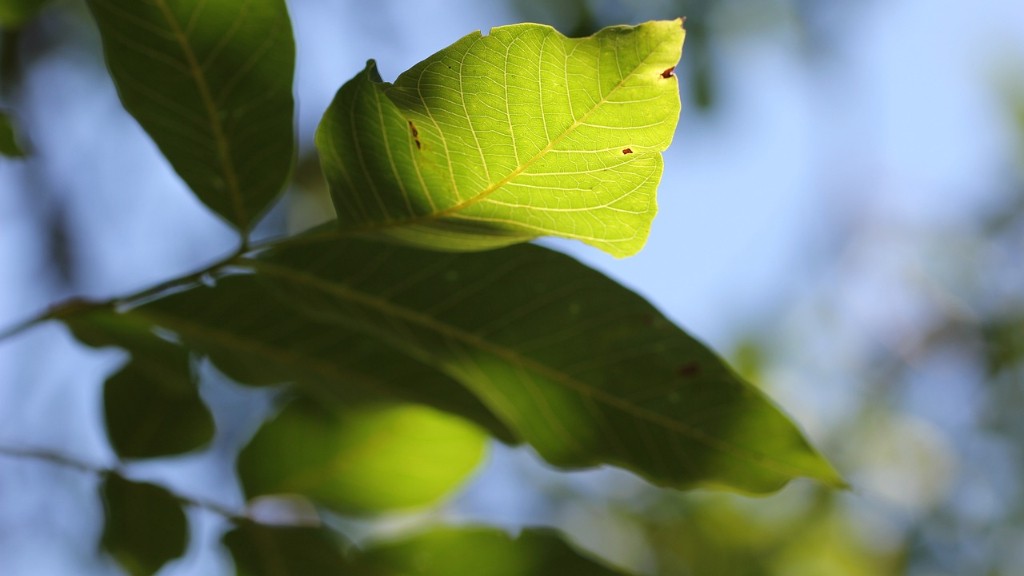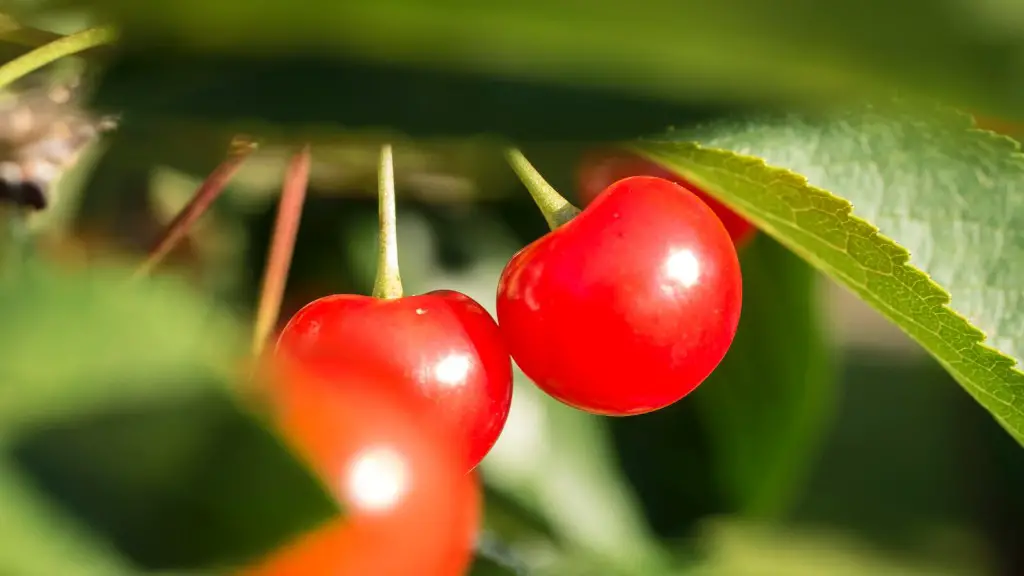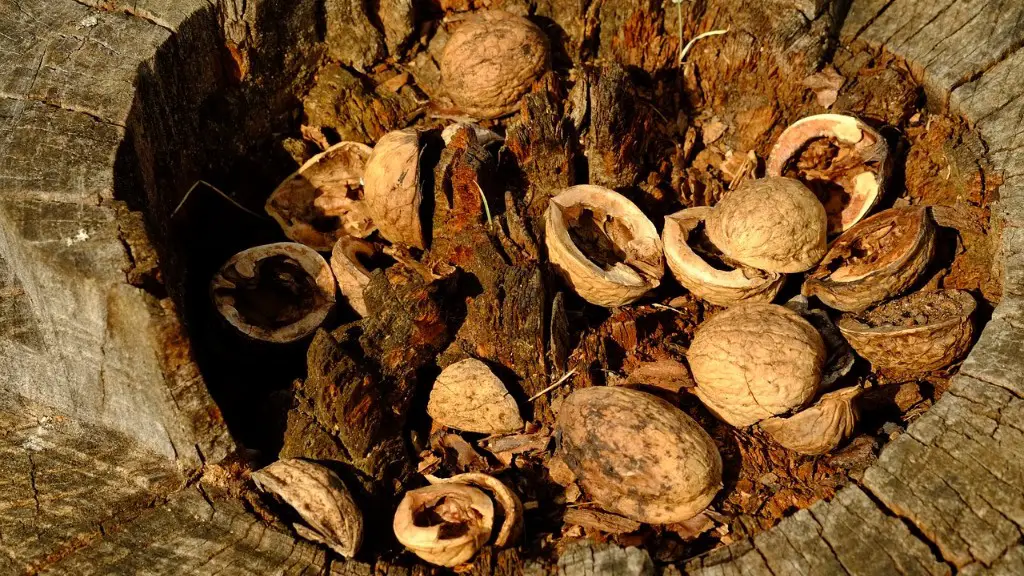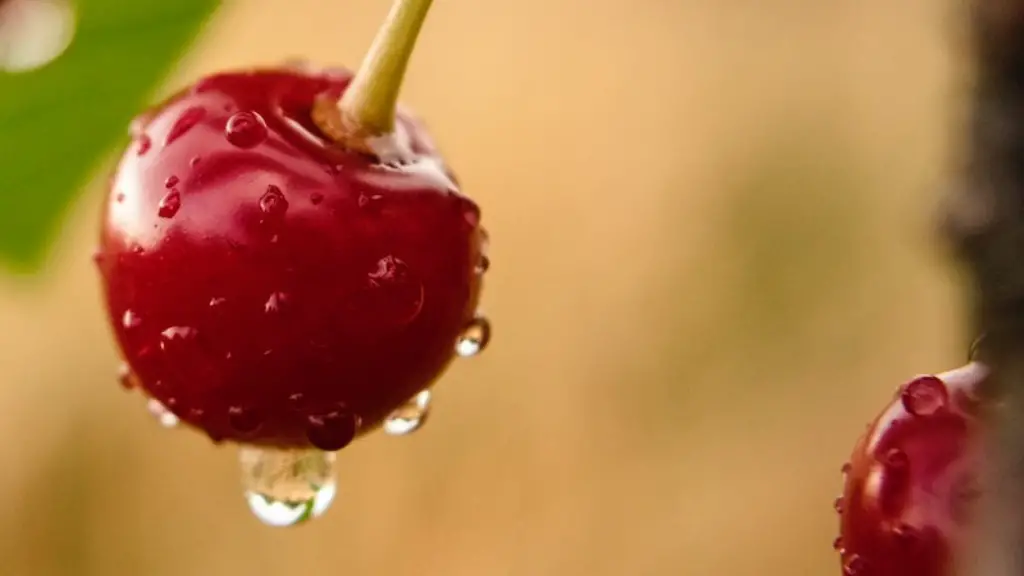Growing fruits from a lemon tree is no easy feat. On average, it can take up to three years for a lemon tree to fruit from the time it is planted. There are many steps to proper cultivation of a lemon tree that can help it to bear fruit sooner than three years. The living environment of the tree, as well as its treatment, should be closely monitored and managed to ensure it is healthy and primed to produce fruit.
When planting a lemon tree, it is necessary to take into consideration its root zone requirements. Proper soil temperature and moisture levels should be maintained to ensure optimal growth. It is beneficial to ensure proper aeration and drainage, as well as adding phosphorous and nitrogen fertilizer to the planting site.
Another key factor to consider is the environment where the tree will be located. Lemon trees need 8-10 hours of direct sunlight a day and should be located in areas with good air circulation. The trees should also be pruned and the fruits should be thinned out to ensure the tree’s buds receive the necessary nutrition from the nutrients provided by the soil.
Lemon trees have many other needs in order to bear fruit. Regular watering is essential and should be done in the morning hours. Mulching and staking can also be done, as well as pest management. The trees should be regularly monitored for diseases and insect pests that can be devastating to the trees.
Finally, proper hygiene is essential to ensure the tree is healthy and able to produce fruit. The lemon tree should be regularly pruned and the leaves should be wiped down with soapy water to remove any pests that may be present. This will help to keep the tree healthy and ensure it produces fruit in the prescribed amount of time.
Pest Management
Pest management is one of the most important aspects of lemon tree cultivation. Many pests are potential threats to the trees, including common garden pests that can stunt the growth of the tree and even cause the tree to die. The most commonly encountered pests are aphids and mealybugs, which can be removed from the plants with a liquid insecticide.
It is also important to check the tree regularly for any signs of disease, such as yellowing leaves, brown spots, and fallen fruits. If such symptoms are observed, it is important to seek professional assistance to treat the tree as soon as possible in order to prevent further damage and to ensure the health of the tree.
Another effective pest management strategy is to apply organic mulches to the tree’s root zone to discourage pests from laying eggs and invading the tree. Organic mulches can also help to retain moisture in the soil and contribute to the overall health of the tree.
It is also essential to remove fallen fruits from the tree as soon as possible, as these can be a source of food and shelter for pests, as well as allowing the spread of diseases and fungi on the tree.
Finally, regular pruning of the tree can help to discourage pests from infesting the tree, as fewer branches will provide fewer places for pests to access the tree.
Fertilization
Aside from pest management, proper fertilization is essential for the growth of lemon trees. Fertilizers should be applied to the soil once a year to promote healthy growth. There are several types of fertilizers specifically used for citrus trees, and they should be applied in the spring and summer months.
It is also important to monitor the soil’s pH level, as it should remain between 5.5 and 6.5. If the pH level is too high or low, it may inhibit the growth of the tree, so it is important to adjust the pH with lime or sulfur. Additionally, it is necessary to ensure the Potassium and Nitrogen levels of the soil are kept in balance, as a healthy balance of both will help to promote healthy growth.
It is also beneficial to add organic materials such as compost or manure to the soil in order to give the tree additional nutrients. Adding organic materials helps to break up soil compaction and gives the soil more aeration and drainage capabilities. This will further improve the growth of the tree.
Finally, proper irrigation of the tree is important in order to keep the soil from becoming water-logged. The soil should be kept moist, but not sodden, so as not to suffocate the roots of the tree or damage any of the fruits.
Pollination
Pollination is one of the most crucial steps in producing fruit on a lemon tree. Bees are the primary source of pollination in lemon trees, and the presence of the bees should be monitored regularly in the area of the tree. If there is a lack of bees in the area, then hand-pollination of the tree must be done.
Furthermore, it is important to ensure that the flowers of the tree receive enough sunlight in order to facilitate the process of pollination. The open form of the lemon tree means that it needs more direct sunlight to successfully produce fruit.
In addition to the role of bees, wind is also a great pollinator of plants and can help with pollination even in areas that have limited bee numbers. Wind-pollinated flowers will produce a larger crop of fruits than depends entirely on the presence of bees in the area.
It is also useful to plant other citrus fruits nearby the lemon tree to maximize pollination. This way, the presence of more pollinators in the area will help facilitate the process of pollination and ensure that the tree produces fruits in a timely manner.
Finally, using a brush or swab to manually pollinate the flowers of the tree is an effective means to ensure pollination and resulting fruit production. Brushes and swabs can be used to pick up pollen from the anthers of the flower and transfer it directly to the stigma of the same or another flower to pollinate them.
Watering
Lemon trees need regular watering to stay healthy and produce fruit. Trees should be watered in the morning, when temperatures are lower and the water is slower to evaporate, and the ground should be moistened evenly around the tree. Additionally, too much or too little water can be damaging to the tree, so it is important to ensure that it is getting the right amount of moisture.
A water soluble fertilizer should be applied once a month to the tree to ensure it has the necessary nutrients to produce fruits. Moreover, it is important to ensure that the tree has proper drainage capabilities in order to prevent root rot. Good drainage will ensure that water remains in the soil and doesn’t pool around the roots of the tree.
In addition to proper watering, it is also essential to monitor the pH levels of the soil, as too much of either a high or low pH value can stunt the growth of the tree and cause it to produce fewer fruits. The ideal pH value for lemon trees is between 5.5 and 6.5, so it is important to adjust the pH levels in the soil if necessary.
Finally, mulching can also help to retain moisture in the soil, which is essential for the growth of a healthy tree. Organic mulches such as wood chips and leaves will help to keep moisture in the soil and help to prevent water evaporation. This will benefit the tree in the long run, as it will ensure the soil remains moist enough to produce healthy fruit.
Pruning
Pruning is another important task in the cultivation of lemon trees, as it helps to keep the tree healthy and encourages fruit production. Pruning should be done in early spring before the tree begins to produce new growth. Pruning helps to shape and control the growth of the tree and can also reduce overcrowding, which can lead to poor fruit production.
It is also important to thin out the tree’s fruit in order to give the remaining fruit more space for growth. Thinning out fruit also keeps the tree from becoming over-weighted and encourages the lemon tree to produce more flowers, which leads to more fruit. Furthermore, it is beneficial to remove any diseased or dead branches, as these can act as a source of infection for the rest of the tree.
It is essential to use sterile tools when pruning the tree in order to avoid the spread of disease and fungi. Additionally, during the pruning process, it is important to remove any flowers that appear to be wilting, as they will not produce fruit and may attract pests.
It is also beneficial to prune trees that are excessively tall, as this will not only keep the tree healthy, but also help to reduce its height and allow more sunlight to reach the fruit-producing buds. This will help to ensure that the tree produces an abundance of fruit.
Finally, pruning during the winter months will help the tree to conserve energy and focus it on producing healthy fruits rather than sending its energy to branches that bear little or no fruit. Therefore, it is beneficial to prune the tree when it is dormant in order to ensure the health and productivity of the lemon tree.





